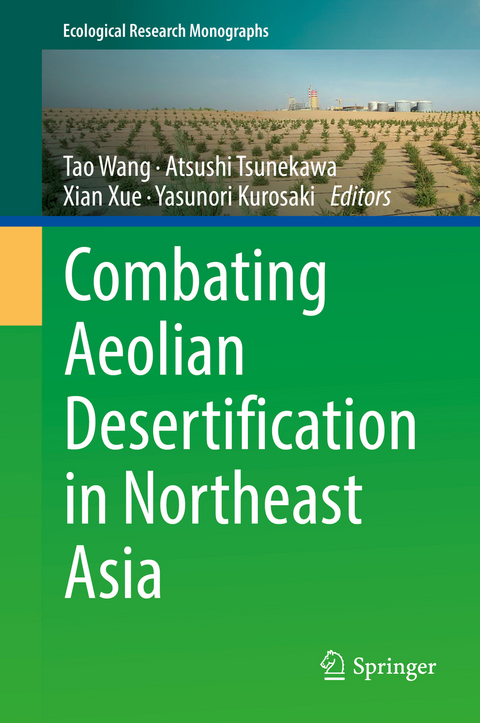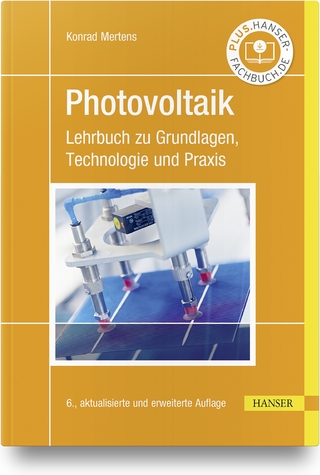
Combating Aeolian Desertification in Northeast Asia
Springer Verlag, Singapore
978-981-16-9027-3 (ISBN)
This is the first comprehensive book to address the aeolian desertification in Northeast Asia. Readers can learn the basic theory of aeolian desertification and the primary causes of this environmental problem. More critical is the successful practical countermeasures to combat desertification which can be referred to by various stakeholders who concern the aeolian desertification in Northeast Asia.
To meet the Sustainable Development Goals of the United Nations adopted in 2015, especially its Goal 15.3 to achieve a land degradation-neutral world by 2030, desertification combating actions should be taken cross country borders. This book is not only intended for environmental professionals but also for people who are affected and concerned about desertification and land degradation. The concept and processes in this book will serve as a ready reference to understand the aeolian desertification with countermeasures and successful preventing stories that can be referred to.
Dr. Tao WANG is a professor at Northwest Institute of Eco-environment and Resources, Chinese Academy of Sciences (CSA). He obtained his doctoral degree from Lanzhou Institute of Desert Research, CAS. He has been at the forefront of aeolian desertification and disaster research and control since 1983, and obtained encouraging results on the status, causes, blown sand physics and biology process, development, and reversal trend of aeolian desertification in Northern China. His work has helped the national policy maker and organ of authority to take notice of aeolian desertification and provided theoretical foundation and technique system for implementation of national layout and projects to combat aeolian desertification and disaster. He served the UNCCD for years as member of the Scientific Advisory Committee of Third Scientific Conference (SAC, UNCCD) and as member of Science-Policy-Interface (SPI) of the UNCCD. Atsushi Tsunekawa is a professor at Arid Land Research Center, Tottori University (Japan). He graduated from the Graduate School of Agricultural Sciences, University of Tokyo, after which he joined the National Institute for Environmental Studies, Japan. Currently, he serves as a professor at the Arid Land Research Center, Tottori University, and also serves as a head of Strategic Management Office of International Platform for Dryland Research and Education, Tottori University. His primary scholarly interests are developing sustainable land management (SLM) technologies and approaches to restore degraded land and improve farmers’ livelihood, and monitoring and modelling of terrestrial ecosystems under climate change using remote sensing and GIS. He has been selected as a Science and Technology Correspondent from Japan to the Committee on Science and Technology of United Nations Convention to Combat Desertification. Xian Xue is a professor at Northwest Institute of Eco-Environment and Resources (NIEER), Chinese Academyof Sciences. She obtained her PhD in physical geography from the Graduate School at the Chinese Academy of Sciences in 2002. As the head, she currently leads the Department of Desert and Desertification in the NIEER, the Dryland Salinization Station of NIEER, and the Salinization Research Station of Gansu Province. Prof. Xue’s main research fields are desertification and restoration, and climate and environmental change in arid and cold regions. Her interest focuses on the dynamic process and mechanism of desertification and its rehabilitation. One of her current research is exploring the impact of global warming and human activity on land degradation in the arid and alpine ecosystems. Her other work is to explore restoration possibilities of degraded land in the drylands by integrating water management, sustainable agriculture, and biological techniques with her team. Yasunori Kurosaki is a professor at Arid Land Research Center (ALRC), Tottori University, Japan. He obtained his PhD from Graduate School of Life and Environmental Sciences, University of Tsukuba. His main research theme is elucidation of the aeolian dust emission mechanisms. Prof. Kurosaki began his research at the Meteorological Research Institute, Japan Meteorological Agency, in 2001, and he has continued it at Chiba University, Georgia Institute of Technology, and Tottori University. He has elucidated the causes of aeolian dust emission that change with time and place in drylands of Northeastern Asia mainly by analyzing meteorological observatory data and GIS data such as satellite data. He has also studied it by field surveys in the Gobi Desert. His interest and the purpose of his research are to apply his elucidated mechanisms to improve numerical aeolian dust models and to prevent wind erosion and aeolian dust damage.
Chapter 1. Definition of Aeolian Desertification and its Implications.- Chapter 2. Environmental and Ecological Setting in Northeast Asia.- Chapter 3. Spatial Distribution and Temporal Dynamics of Aeolian Desertification.- Chapter 4. Driving Factors of Aeolian Desertification.- Chapter 5. Aeolian Desertification Processes.- Chapter 6. Impacts of aeolian desertification and dust storms on ecosystems, economic development, and human health.- Chapter 7. Goals and Principles for Combating Aeolian Desertification.- Chapter 8. Engineering Measures to Combat Aeolian Desertification.- Chapter 9. Biological Measures to Combat Aeolian Desertification.- Chapter 10. Integrated System to Combat Aeolian Desertification and Disasters.- Chapter 11. Land Management Policies for Sand-Dust Storm and Aeolian Desertification in Source Region Countries.- Chapter 12. Successful Implementation of Measures to Combat Aeolian Desertification in China.- Chapter 13. Implementation of Measures to Combat Aeolian Desertification in Mongolia.- Chapter 14. Sustainable Land Management to Combat Aeolian Desertification.
| Erscheinungsdatum | 13.05.2022 |
|---|---|
| Reihe/Serie | Ecological Research Monographs |
| Zusatzinfo | 1 Illustrations, black and white; XIII, 317 p. 1 illus. |
| Verlagsort | Singapore |
| Sprache | englisch |
| Maße | 155 x 235 mm |
| Themenwelt | Naturwissenschaften ► Biologie ► Ökologie / Naturschutz |
| Naturwissenschaften ► Geowissenschaften ► Geologie | |
| Weitere Fachgebiete ► Land- / Forstwirtschaft / Fischerei | |
| Schlagworte | Aeolian desertification • Comprehensive combating approach • dust storm • ecosystem management • land degradation • land degradation neutrality • land restoration • Northeast Asia • Physical and biological processes • SDGs • Sustainable Land Management |
| ISBN-10 | 981-16-9027-8 / 9811690278 |
| ISBN-13 | 978-981-16-9027-3 / 9789811690273 |
| Zustand | Neuware |
| Haben Sie eine Frage zum Produkt? |
aus dem Bereich


